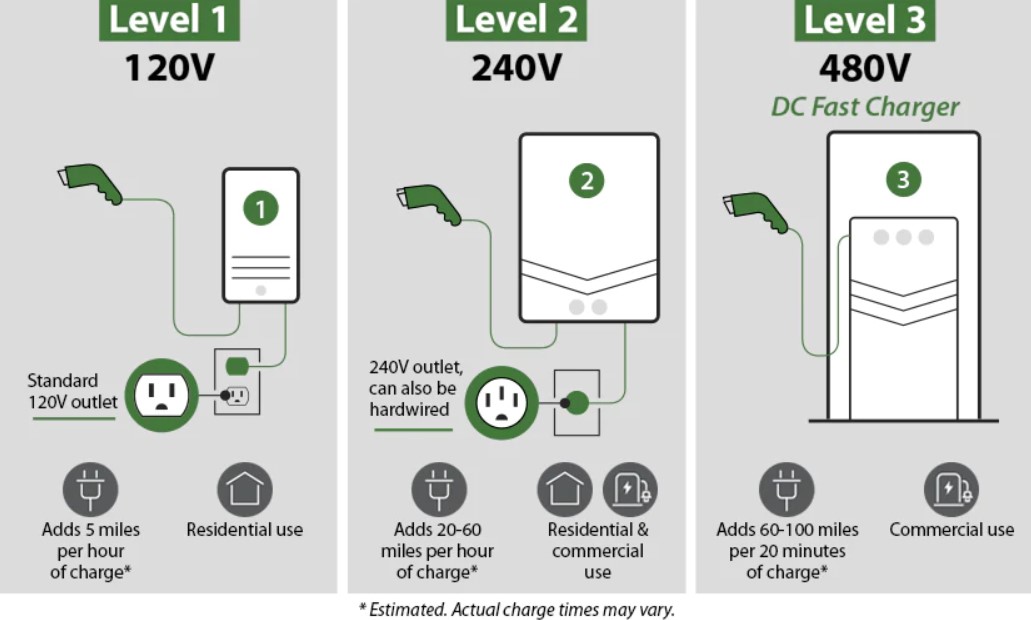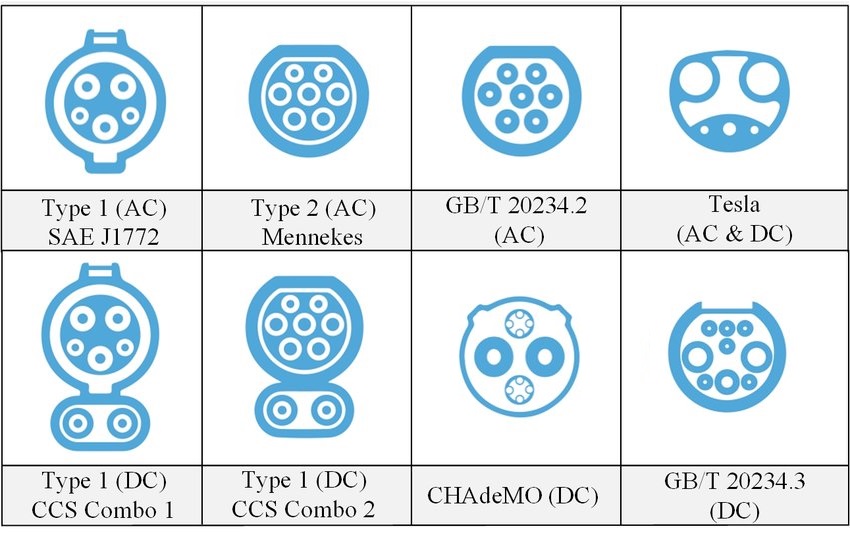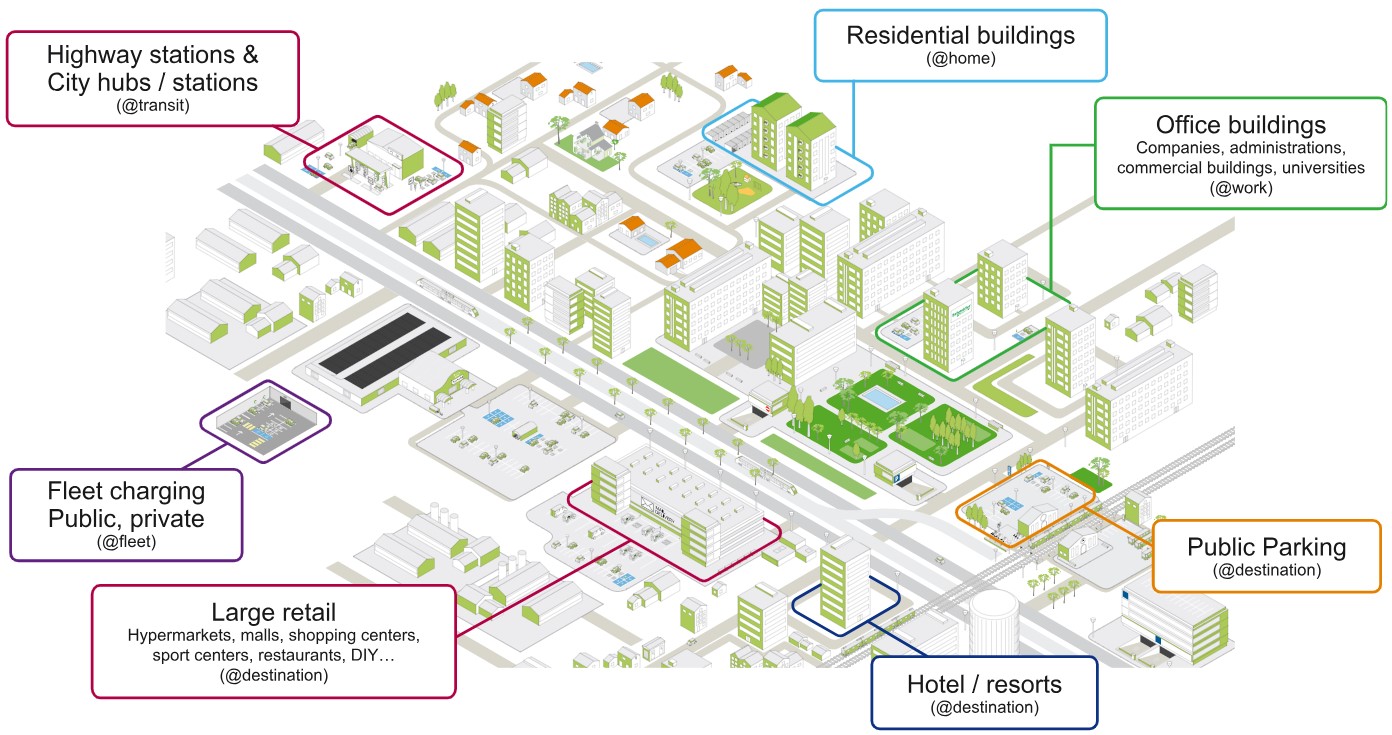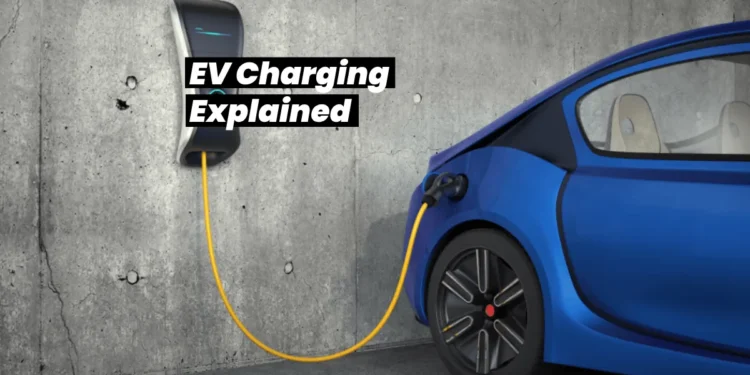Table of Contents
EV Charging Basics
1. Overview
There is a growing global demand for the transition from gas-powered vehicles to electric vehicles (EVs), and as vehicles change from gas-powered to electricity-powered, the way we fuel up vehicles is also changing. Traditionally people seek out gas stations along their routes to a destination point, and typically they wait until their fuel tanks are almost empty, but with electric vehicles people will be able to charge their vehicles wherever they are parked without waiting until the battery pack has run low. So, if you’ve decided to make the switch and invest in an electric vehicle (EV), the next thing you will likely be asking is how to charge it. There is a lot to consider with EV chargers so in this article we will help you understand terminologies involved and have a broad comprehension about them.
(Check out our article on: All you need to know about Electric cars)
2. EV Charger Types

EVs can be charged using electric vehicle supply equipment (EVSE), which generally are classified into three different levels of charging :
- Level 1 chargers use the same outlet you use to charge your cell phone and computer. You can plug your vehicle directly into the 120 Volt outlet using the cable that usually comes with the car. The cable is usually a standard 3-prong household on one end and J1772 (Type1) EV connector on the other end. Note that level 1 chargers are the slowest of the three charger levels, which can only provide between 1.3kW and 2.4kW. Depending on the battery size and the vehicle, level 1 chargers can take 40-50 hours to charge a BEV to 80 percent from empty and 5-6 hours for a PHEV.
- Level 2 chargers are much faster than level 1 and utilize a 208 volt to 240 volt AC outlet. They are common for home, workplace, and public charging. Note that level 2 chargers can provide power from 3kW to 19.2kW. Level 2 chargers can charge a BEV to 80 percent from empty in 4-10 hours and a PHEV in 1-2 hours. If you don’t already have a 240 volt outlet a qualified electrician can help you install a new outlet and a level 2 charger. They can eventually say if your home has sufficient capacity to host a level 2 charger or your home needs an upgraded electrical panel and will ensure work is done properly.
- Level 3 chargers, also called DC fast chargers are significantly faster than level 1 and 2 chargers. They utilize a three phase supply typically 480 volt in North America and able to deliver between 50 kW and 400kW. They are found primarily along highways and in cities at various public locations including, for example, at grocery stores, public parking, or coffee shops to enable long-distance trips and quick refueling when it’s needed. Level 3 chargers can charge a BEV to 80 percent in just 20 minutes to 1 hour. Most PHEVs currently on the market do not work with fast chargers.
All BEVs and most PHEVs are compatible with all charging levels (1–3). It’s important to check if your PHEV is capable of DC fast-charging.
3. What are the types of EV charging connectors?

As it usually happens with every new technology, the beginnings are tough and full of competing standards. Electric vehicles are a lot like that. Each manufacturer uses and develops his own standards and processes.
EV connectors can vary significantly by country and type of EV charger either level 1,2 or 3. So let’s have a look at all the charging connectors that we have in the world now.
AC connectors :
- J1772 – Type 1 : The SAE J1772 connector, commonly known as J Plug or Type 1 connector, is a charging standard used primarily in North America and Japan.
- Mennekes – Type 2 : The Mennekes connector, also known as the Type 2 connector, is a popular charging standard in Europe.
GB/T 20234.2 : The GB/T 20234.2 connector is the national standard for AC charging in China.
DC connectors :
- CCS – Combo 1 : CCS Type 1 (Combined Charging System), or CCS Combo 1 or SAE J1772 Combo connector, combines the J1772 Type 1 plug with two high-speed DC fast charging pins. CCS 1 is the DC fast charging standard for North America.
- CCS – Combo 2 : The CCS – Combo 2, also known as CCS Type 2, combines the Mennekes Type 2 plug with two high-speed DC fast charging pins. CCS 2 is the primary DC fast charging standard used in Europe.
- CHAdeMO : The CHAdeMO connector is a DC fast-charging standard that was initially introduced and developed by Japanese automakers.
- GB/T 20234.3 : The GB/T 20234.3 connector is the national standard for DC charging in China.
- Tesla : Also known as NACS (North American Charging Standard), is the connector used in North America for both AC and DC charging, but Tesla Motors can provide Tesla cars with the other connectors depending on which part of the world you are in and which model you want.
4. How long will it take to charge my EV?
How long it takes to charge your electric car depends fundamentally on your EV battery capacity and the Charging power. Here is a simple formula that you can use to calculate charging time for your electric vehicle with some examples of how to use it.
 For example, for an electric vehicle with :
For example, for an electric vehicle with :
- 40kWh battery capacity
- 6.6kW onboard charger for AC charging
The estimated full charging time in case of AC charging is:
- 11h for home charging station of 3.7kW (40kWh / 3.7kW)
- 6h30 for AC charging station of 11kW (40kWh / 6.6kW, 6.6kW because the onboard charger can only allow this amount of power)
The estimated full charging time in case of DC fast charging is:
- 50min for DC fast charging station of 50kW (40kWh / 50kW)
- 10min for DC ultra-fast charging station of 250kW (40kWh / 250kW)
5. How much will it cost to charge my EV?
The cost of charging an electric vehicle depends on the price of the kilowatt hour (kWh), which is subject to many factors, including the region where you live, the time of year, and even the time of day that you choose to charge, since the price of electricity varies throughout the day too. Overall, charging your EV is significantly less money than filling up a gasoline car
6. Electric vehicle charging locations

Unlike traditional gas-powered vehicles, which refuel at gas stations, electric vehicles can recharge at multiple locations, including residential buildings (Home), small to large office buildings, public parkings, supermarkets, highways, city stations, shopping centers and malls. In fact most EV owners perform their charging events either at home or work and only from time to time at other locations.
















